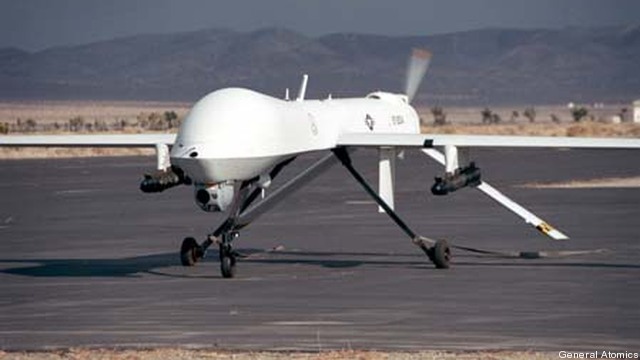Predator Maker Redesigns UAV To Boost Exports
Posted on
 Each generation has military platforms which define it. Inter-continental ballistic missiles, stealth bombers, and nuclear propulsion submarines assumed that mantle during the Cold War. In the post-Cold War period, few military platforms have captivated the War on Terror generation like the Unmanned Aerial Vehicle (UAV).
Each generation has military platforms which define it. Inter-continental ballistic missiles, stealth bombers, and nuclear propulsion submarines assumed that mantle during the Cold War. In the post-Cold War period, few military platforms have captivated the War on Terror generation like the Unmanned Aerial Vehicle (UAV).
Despite great success on the battlefield, American defense firms have found it difficult to generate significant export revenue from UAV platforms. This is because export of advanced U.S. military UAVs have traditionally fallen under the Missile Technology Control Regime (MTCR) Category I export control restrictions. These restrictions strongly discourage export of such platforms to important buyer countries in Asia and the Middle East such as India, UAE, and Singapore.
As defense budgets decline worldwide, it is no secret that American defense firms are looking to break into growing markets in Asia and the Middle East to offset future revenue losses. But with American manufacturers unable to sell their advanced UAV technologies in these regions, that market share has gone largely to foreign manufacturers, including UAV exporters from Israel, Singapore, and South Africa.
That is about to change.
General Atomics is one American UAV manufacturer hoping to win big in Asia and the Middle East. The company recently introduced an unarmed but potent MTCR Category II-governed offering, the Predator XP, designed for overseas buyers.
“The recent disclosure by the Administration (regarding their support of ISR-only UAV exports to non-MTCR countries) sparked our interest. Non-MTCR Category I countries have not been a focus for us. But, that changed recently when the U.S. Government gave export permission for the Predator XP. The differences are slight changes to the configuration which now make it Category II compliant. The Predator XP opens up new markets to us,” according to Christopher Ames, Director of Business Development at General Atomics.
One such market is India, which Ames acknowledges is a market of interest for his company. However, it is not the only emerging market that General Atomics hopes to enter into. For this reason, company executives are involved in a number of industry-led export control reform initiatives.
That said, the company is not all-in on emerging markets. The bulk of its international business development efforts remain focused on selling Category I-governed Predators to traditional MTCR member states in Europe and Asia.
In Asia, General Atomics continues to prioritize Predator B sales to Australia, Japan, and South Korea. Ames believes that these countries will emerge as major American UAV buyers as they seek to acquire new maritime accountability capabilities, including larger, more capable UAVs equipped with multi-mode maritime radar.
While General Atomics and other American UAV manufacturers recognize that traditional foreign manufacturers and new market entrants, particularly South Korean manufacturers, will challenge American UAV manufacturer dominance in contested markets, there is not a great deal of concern on the part of industry insiders. “We have a weather eye to both international and domestic competition,” says Ames. “Competition is going to grow in the future but we welcome competition. We have amassed 1.6 million hours of flight time though – about 42,000 hours are added per month. Competition will keep us innovative but we will introduce new disruptive changes.”
Subscribe to our newsletter
Promotions, new products and sales. Directly to your inbox.
